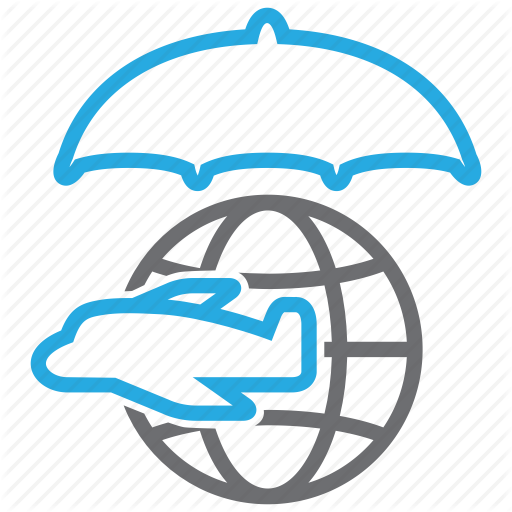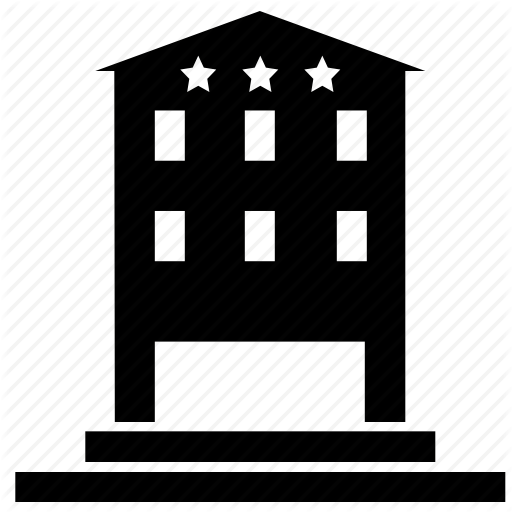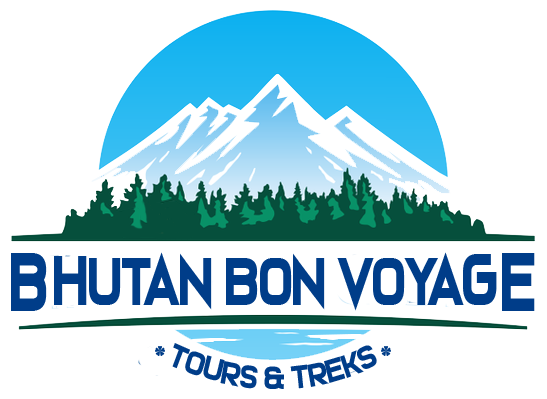Travel tips
Welcome to our travel tips page. Here you’ll find loads of useful info to help get you prepared before setting off your tip

Air
The only International Airport is located in Paro.
International flight routes operated by Druk Air and Bhutan Airlines:
| Country | Airport |
|---|---|
| India | Kolkata CCU, Delhi DEL, Bagdogra IXB, Guwahati GUA |
| Nepal | Kathmandu KTM |
| Thailand | Bangkok BKK |
| Bangladesh | Dhaka DAC |
| Singapore | Singapore SIN |
Land
South-Western Border
The nearest airport to the south-western border town of Phuntsholing is at Bagdogra, West Bengal, about 4 hours’ drive away. Phuentsholing is a convenient entry/exit point for travellers wishing to visit the Indian states of Sikkim and West Bengal along with Bhutan.
South-Central Border
The nearest airport to the south-central border town of Gelephu is at Bagdogra, West Bengal, about 6 hours’ drive away. Gelephu can also be used as entry/exit point for travellers wishing to visit the Indian states of Sikkim, West Bengal, Assam and the North Eastern Indian States along with Bhutan.
South-Eastern Border
The nearest airport to the south-eastern border town of Samdrup Jongkhar is at Guwahati, capital of the Indian state of Assam, about 3 hours’ drive away. Samdrup Jongkhar is a convenient entry/exit point for travellers wishing to visit the Indian states of Assam and other North Eastern states of India along with Bhutan.

Daily Tariff
- USD $200 per person per night for the months of January, February, June, July, August, and December.
- USD $250 per person per night for the months of March, April, May, September, October, and November.
Minimum Daily Package
The minimum daily package covers the following services:
- Airport Transfers
- Accommodations (3 star hotels and resorts)
- Standard SUVS & BUSES
- All three meals, tea and coffee
- Dedicated SUV vehicle with a driver
- English Speaking Guide throughout the Trip
- Monumental Fees
- Bhutan Tourism Development Fees
- VISA processing Fee
Surcharges
Tourists travelling in a group of two (2) persons or less shall be subject to a surcharge, in addition to the minimum daily package rates.
These are as follows:
- Single individual - US$ 40 per night
- Group of 2 persons only - US$ 30 per person per night
The Royal Government of Bhutan sets minimum selling prices for packages to Bhutan. These must be paid in US dollars prior to arrival in Bhutan.
Cancellation Policy
- Within 60 days of the start of the tour program : Free
- Within 1 months : 15% of the rate
- Within 14 days : 30% of the rate
- Less than 7 days or cancellation without notice : 50 % of the rate
- After arrival in Bhutan : 100% of the rate
Tour Payment Method
The Tour payment can be remitted by Telegraphic/Electronic transfer to the account of Bhutan National Bank through the corresponding banks from aborad. Following are the proper Bank Details for wiring your tour payments to Bhutan if your Bhutan Travel is certain.
Our Bank Detaails for USD payment:
| 1 | Bank Address (Correspondent Bank) | Standard Chartered bank Ltd One Madison Avenue, New York NY 10010-3603 SWIFT Code: SCBLUS33 FED ABA: 026002561 |
| 2 | Beneficiary Bank Account | 358-202-171-9001 (USD Account) |
| 3 | Beneficiary Bank | Bhutan National Bank, PO Box: 439, GPO Building, Changlam, Thimphu, Bhutan SWIFT Code: BNBTBTBT |
| 4 | Beneficiary / Ultimate Beneficiary Account # | 0100063999001 of Bhutan Bon Voyage Tours & Treks maintained eith BNBL, Thimphu, Bhutan |

Foreign Nationals
Tourist visa for foreign nationals are to be arranged by authorized travel agencies only.
Visas are required for travelling to Bhutan. No foreign mission/embassy abroad grants tourist visas for Bhutan. Visas are processed through the local tour operator in aggregation with the tour booking. Your Bhutan visa will be applied by us after the full tour payment is received. You will be required to provide the following:
- Scanned Passport Copy sent via email.
- Your passport should be valid for at least 6 month after your planned date of departure from Bhutan.
Arrival by Air (Paro International Airport)
- Visa applications are cleared in advance, and a visa clearance doc will be forwarded to you. The visa clearance doc is required for check-in/boarding the flight to Bhutan.
- On arrival at the Paro International Airport, the Actual visa is stamped on your passport.
- Passport size photo is NOT required for Immigration at Paro Airport.
Arrival by Land (Phuentsholing, Samdrup Jongkhar and Gelephu)
- Visa applications are cleared in advance, and a visa clearance doc will be forwarded to you. The visa clearance doc is required at the border Immigration Check Points at Phuntsholing & Samdrup Jongkhar & Gelephu.
- On arrival at the border town Immigration Check Points at Phuntsholing & Samdrup Jongkhar & Gelephu, the Actual visa is stamped on your passport.
- Passport size photo is NOT required.
- Finger prints and photos will be taken at the at border town Immigration Check Points at Phuntsholing & Samdrup Jongkhar.
**Note**
Please make sure to travel with the same passsport on which the Bhutan visa was issued. We will not be held responsible if the passport on which the visa was issued does not match the passport used to travel to Bhutan. In such an event, you will not be allowed to board the flight or enter Bhutan at the border towns.
Indian Nationals
All Indian nationals visiting Bhutan do not require a visa to enter Bhutan. Travel documents required are Passport / Voter Card / Citizenship ID Card.
Please note that a Person of Indian (POI) Origin and Overseas Citizenship ID Card is not admissible.
Bangladesh and Maldives Nationals
All Bangladesh and Maldives nationals do not require a visa to enter Bhutan. Travel document required is Passport

A travel insurance policy to cover theft, loss and medical problems is always highly recommended. Most policies will cover costs if you are forced to cancel your tour because of flight cancellation, illness, injury or the death of a close relative. This can protect you from major losses due to Bhutan's prepayment conditions and cancellation charges.
Some policies specifically exclude 'dangerous activities', and these can include motorcycling, rafting and even trekking. Read your policy carefully to be sure it covers ambulance rides or an emergency helicopter airlift out of a remote region, or an emergency flight home. Many travel-insurance policies include repatriation and evacuation through the worldwide network of International SOS Assistance. Keep in mind that if you can't afford travel insurance, you certainly won't be able to afford to deal with a medical emergency overseas.
You may prefer a policy that pays doctors or hospitals directly rather than you having to pay on the spot and claim later. If you have to claim later, make sure you keep all documentation. Some insurance companies ask you to call them (they suggest reversing the charges, an impossibility from Bhutan) at a centre in your home country, where an immediate assessment of your problem is made.

We would suggest that spring and autumn are definitely the best time to visit Bhutan. At the same time summer and winter have their own draws and attractions.
Spring (March, April & May)
It is considered the most striking time of the year, dazzling and blazing with a remarkable display of bright colors. This is the time when the valleys are green with fresh vegetation and fruit trees are blossoming ,the time when locals are naturally mirthful and cheery, when visitors are most welcome.
Monsoon (June, July & August)
Magnificent skies and warm weather is a pleasant time to devote visiting places of cultural and historical interest though this season is not the best time for trekking. Enjoy watching the rainfall from your hotel window. Or if you possess an adventurous spirit, take a through the town!
Autumn (September, October & November)
It is lovely with clear and crisp blue skies, providing a grand view of some of the tallest unclimbed mountains in the world. It is the best time for trekking and traveling. The climate is cool and temperate and you can get lovely photography opportunities of willows shedding their golden brown leaves, the solitude of parks and somber views of dzongs and monasteries.
Winter (December, January & February)
It is sunny, cool and agreeable to say the least. Much of the east-west highway remains snowbound during winter. One of the chief attractions in winter is the beautiful Gangtey (Phobjikha) valley where you can expect to see a wide expanse of rolling plain with bamboo shrubs. The graceful Black-Necked Cranes come to roost at the plain from the Tibetan plateau during this time of the year offering you wild-life picture opportunities.It is the best time to tour the western districts of Paro, Wangdue, Punakha,Thimphu and Haa. At the Dochula Pass en route to Punkaha, you can view the Himalayan peaks including the highest mountain peak in Bhutan – Gangkar Puensum when the weather is clear and sunny as it is during most winter days.

Bhutan Bon Voyage Tours & Treks gives you a wide variety of accommodation which is available ranging from luxurious 5-star hotels to cozy little hotels and homestays in traditional Bhutanese homes and settings. Visitors can be assured of their warmth and comfort of the hotels. Similarly, the ambience and hospitality offered by the hotels are incredible.
The types of accommodations can be divided into:
- 5 Star Hotels (Additional Premium required)
- 3 Star Hotels & Resorts (Inclusive Standard Package)
- Farm Stays (Optional)
- Home Stays (Optional)
Trekking
Additionally visitors embarking on long treks will be provided with tents and whatever other camping equipment is deemed necessary. Regardless of where they stay, visitors can be assured of their comfort and traditional Bhutanese hospitality.
Hotels
Bhutan has hundreds of hotels located all across the country. They range from small, simple and clean local hotels to luxurious resorts for affluent travelers seeking the ultimate getaway. Hotels in Bhutan are rated according to a National 5 Star rating System. All Tour Operators are required to provide their guests with a minimum of 3 Star accommodations so you can be assured of your comfort. Most hotels provide their guests with Television, Room Service, Fitness Centers, Spas and Wi-fi. However the exact services available will vary from hotel to hotel.
Guest Houses
There are various Guesthouses located around the Bhutan. They are graded on the same scale as hotels. The exact services available can vary among Guesthouses.
Farm Stay
Visitors also have the option of spending a night in a traditional Bhutanese Farm House. Agriculture is still one of the major sources of livelihood amongst the Bhutanese people and a Farm-Stay will give you an excellent glimpse into the day-to-day life of a typical Bhutanese family. You’ll be able to observe age old Bhutanese farming traditions as the family goes about its daily tasks. You’ll enjoy delicious home-cooked meals and the unparalleled hospitality of a Bhutanese host.

Tshechu is a religious festival meaning “tenth day” held annually in various temples, monasteries and dzongs throughout the country.
The Tshechu is a religious event celebrated on tenth day of a month of the lunar calendar corresponding to the birthday of Guru Rimpoche (Guru Padmasambhava). However the exact month of the Tshechu varies from place to place and temple to temple.
Tshechus are grand events where entire communities come together to witness religious mask dances, receive blessings and socialize. In addition to the mask dances, tshechus also include colorful Bhutanese dances and other forms of entertainment.
It is believed that everyone must attend a Tshechu and witness the mask dances at least once to in order to receive blessings and wash away their sins. Every mask dance performed during a Tshechu has a special meaning or a story behind it and many are based on stories and incidents from as long ago as the 8th century, during the life of Guru Padmasambhava. In monasteries, the mask dances are performed by monks and in remote villages, they are performed jointly by monks and village men.
Two of the most popular Tshechus in the country are the Paro and Thimphu Tshechus in terms of participation and audience. Besides the locals, many tourists from across the world are attracted to these unique, colorful and exciting displays of traditional culture.

Environmental protection goes hand in hand with cultural preservation in Bhutan. By law, at least 60% of the country must remain forested for all future generations; it currently stands above 70%. Not only is Bhutan carbon neutral, but it actually absorbs more carbon than it emits! For the visitor, this translates into lovely forest hikes and superb birding across a chain of national parks. Whether you are spotting takins or blue poppies, trekking beneath 7000m peaks or strolling across hillsides ablaze with spring rhododendron blooms, Bhutan offers one of the last pristine pockets in the entire Himalaya.

1. Where is Bhutan?
Bhutan is a small, landlocked nation located in the eastern Himalayas between India and China. Its landscape ranges from subtropical plains and forests in the South to subalpine forests and snowy mountains in the North. Bhutan is a predominantly Buddhist country and is known as the last stronghold of Mahayana Buddhism.
2. Do I need to use a tour operator to book my travel?
It is a government regulation that you must use a licensed Bhutanese tour operator to book your travel to Bhutan or one of their international partners.
3. Do I need a visa to enter Bhutan?
All International tourists wishing to enter Bhutan require a visa which must be pre-arranged through a license Bhutanese Tour Operator or one of their international partners. Visa clearance must be obtained through your tour operator prior to travel. For Indian passport (or VIC) holders, Bangladeshi nationals and persons from the Maldives may obtain a visa on entry.
4. How much does the visa cost?
For International tourist visas, a cost of USD 40 is applicable. This can be paid in advance to your tour operator or travel agent. For Indian passport (or VIC) holders, Bangladeshi nationals and persons from the Maldives, there is no cost incurred.
5. How do I get to Bhutan?
There are a number of airports where you can fly into Bhutan from (Bangkok, Delhi, Kolkata, Bagdogra, Bodh Gaya, Dhaka, Kathmandu, Guwahati, Singapore and Mumbai.). At present two carriers operate to Bhutan, Drukair and Bhutan Airlines. Also, there are three land border crossings which you can travel into the kingdom overland. All crossings are along the Indian border only - Phuentsholing, Gelephu and Samdrup Jongkhar. All travel arrangements to Bhutan must be made through a local tour operator. A list of tour companies operating in Bhutan is available on this website. Your selected tour operator will make all the necessary arrangements.
6. What does the $200/$250 per day minimum daily package include?
The $200 per day (January, February, June, July, August) and $250 per day (March, April, May, September, October, November) package includes a minimum of 3 star accommodations, costs for food, an experienced guide and transportation within the country. Also included in the price is a $65 per day Sustainable Development Fee that goes towards free education, free healthcare and poverty alleviation. All of these services will be arranged by your tour operator.
7. What currency is used in Bhutan?
Bhutanese currency is known as the Ngultrum. It's value is equavalent to the Indian Rupee which is widely accepted in the country. For the Foreigners, our banks and ATM accept visa and maestro card.
8. Is there a limit on the number of tourists that can enter Bhutan each year?
There is no limit on the number of tourists allowed to visit in a year. In order to protect our culture, traditions and natural environment, the government has adopted a unique policy of “High Value, Low Impact ”. This policy is aimed at attracting discerning tourists that will respect the unique culture and values of the Bhutanese people while also providing the visitors with an unforgettable one of a kind experience.
9. What’s the food like in Bhutan?
The most distinctive characteristic of Bhutanese cuisine is its spiciness. Chillies are an essential part of nearly every dish and are considered so important that most Bhutanese people would not enjoy a meal that is not spicy. Hotels and restaurant serves your meals in buffet and set menu to our guest with much delicacy which fits to our guest's requirments. Rice forms staple Bhutanese diet. It is accompanied by one or two side dishes consisting of meat or vegetables. Pork, beef and chicken are mostly served menu. A wide selection of western and Indian food is also available in many of the restaurants around the country.



